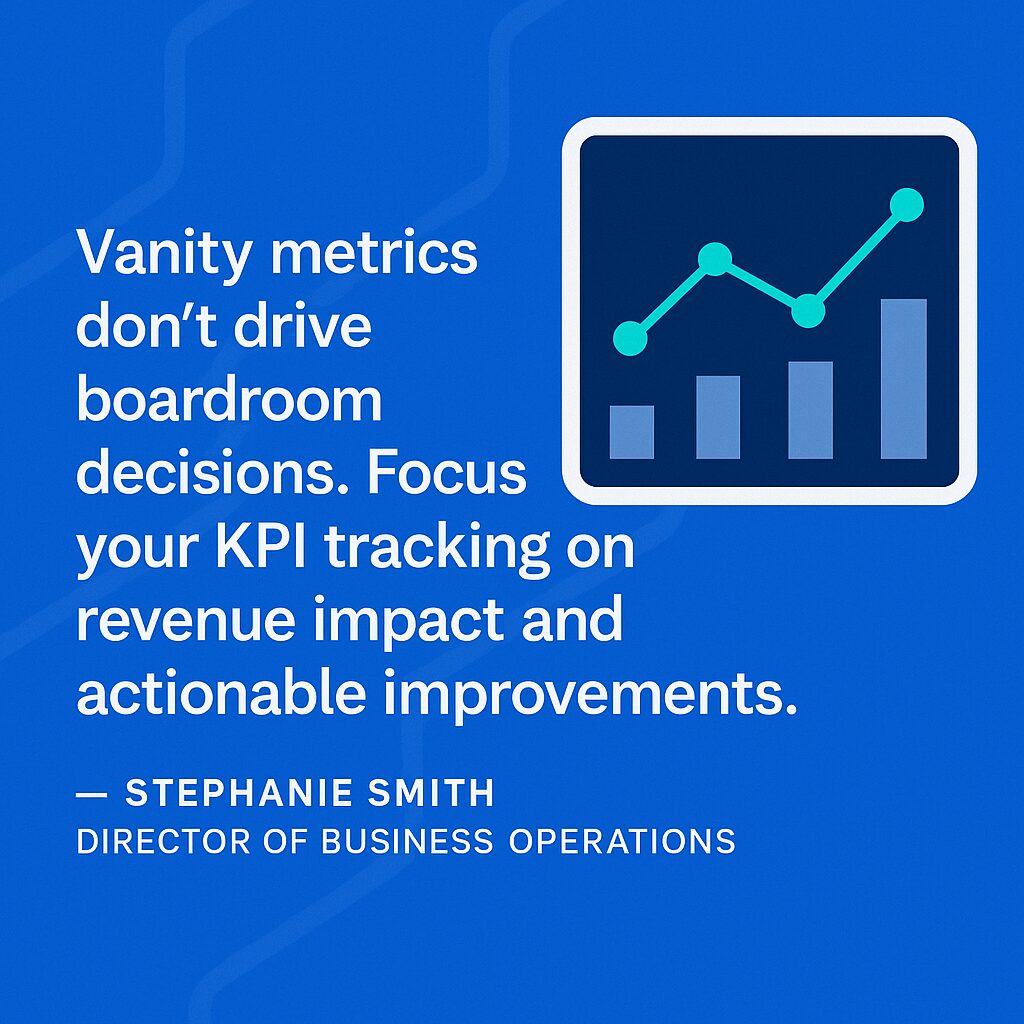TL;DR:
- Website KPIs should reflect business outcomes, not vanity metrics
- Strategic CMOs track impact across pipeline, engagement, and revenue
- Metrics should guide decision-making, not just report on activity
- Quarterly reviews help connect site performance to marketing goals
- Proactive website support enables consistent optimization over time
As a CMO, you’re not here to count page views. Your job is to drive growth and your website should help you do that. But without the right metrics in place, it’s hard to prove what’s working, what needs attention, and how digital contributes to revenue.
When leadership asks, “Is the website doing its job?” you need more than bounce rate trends or blog traffic charts. You need clear, actionable KPIs that tell the story of how the site supports business objectives.
The Problem With Traditional Website Metrics
Too many dashboards are packed with surface-level stats. They might look good, but they don’t tell you much.
Metrics like:
- Pageviews
- Time on site
- Bounce rate
- New vs. returning users
These numbers have context, but not meaning, at least not on their own. They don’t show how your website is contributing to pipeline, helping sales close deals, or improving conversion performance over time.
And when the metrics don’t connect to business value, your website investment can feel like an expense instead of a revenue driver.

KPIs That Actually Matter to Strategic CMOs
To measure what matters, you need KPIs that align with your funnel, your campaigns, and your quarterly goals. Here’s a breakdown of website KPIs that senior marketing leaders should focus on.
Pipeline Contribution
- Marketing Qualified Leads (MQLs) by source. Tracks which channels and campaigns are driving engagement that fits your ICP.
- Form submissions by content type. Measures what’s converting and what’s being ignored.
- Landing page conversion rate. Helps assess campaign performance and page effectiveness.
Sales Enablement
- Resource engagement by account. Tracks how decision-makers interact with assets like case studies, pricing, or ROI tools.
- Demo or contact request attribution. Tells you which pages are tipping the scale toward outreach.
- Time to first touch from web visit. Reveals how quickly web activity moves into sales motion.
Content & SEO Effectiveness
- Top organic entry pages and their conversion rates. Helps validate SEO strategy.
- Keyword ranking trends. Tracks how your content strategy is improving visibility.
- Bounce rate on blog or thought leadership content. Identifies where deeper engagement is or isn’t happening.
Technical & UX Health
- Site speed and mobile usability scores. Critical for both user experience and SEO.
- Accessibility compliance status. Ensures your site is inclusive and aligned with legal standards for accessibility.
- Error tracking (404s, form issues, load failures). Keeps the user experience functional and trustworthy.
When you track these KPIs with consistency, you can not only report performance but use the data to prioritize updates, fix friction points, and guide future content and UX strategy.
How to Operationalize Website KPIs
You don’t need a team of analysts or a custom dashboard to get started. You just need a focused rhythm and the right tools.
Tips to make KPI tracking manageable and actionable:
- Create a core KPI list and align it with quarterly goals
- Use GA4, Hotjar, HubSpot, or another platform to centralize insights
- Assign owners to review and report out every 30 to 90 days
- Prioritize changes that improve one or two key metrics each quarter
- Align campaigns, sales motions, and site updates around what the data is telling you
Most importantly, make sure KPIs are tied to outcomes your leadership cares about. Focus on how the website is helping to generate pipeline, accelerate deals, or reduce acquisition costs.
How 3 Media Web Can Help
Tracking KPIs is only useful if you have the capacity to act on them. That’s where we come in.
At 3 Media Web, we help CMOs transform their websites into performance tools through ongoing strategy, conversion rate optimization, and proactive website support.
Our team partners with marketing leaders to:
- Identify the right KPIs for business alignment
- Set up systems and reviews to track performance over time
- Recommend and implement changes based on what the data shows
- Align content, UX, and site functionality with growth priorities
- Translate performance metrics into real results for sales and leadership
You don’t need more reports. You need clear, strategic insight that supports better decisions and a partner who helps turn insight into action.
